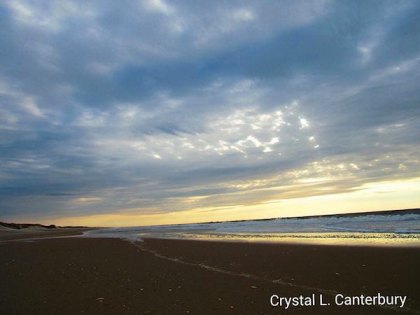NPS Reviews Beach Access Issues

The Defense Authorization Act of 2014 included language specifying the National Park Service needed to make changes to current beach access regulations, and with the deadline of June 16, 2015 rapidly approaching, Outer Banks Group Superintendent David Hallac presented the proposed changes through a presentation. The presentation was followed by a question and public comment session.
The overriding issue discussed by Superintendent Hallac was the buffer zones that have been implemented around bird and turtle nesting sites. In accordance with the state of North Carolina, the U.S. Fish and Wildlife Services, and research conducted over the course of many years, the National Park Service has created new plans for the near future that will allow nesting birds and turtles protected areas, while also giving more access to pedestrian and vehicle use (scientific evidence about the breeding, nesting, and migratory behaviors of the Wilson’s Plover is not concrete at this time).
The new proposal has bird and turtle nest buffer zones being changed on a couple levels. One change is the amount of time the beach closure will remain active at current regulations. The other is the width of the buffer zone around the nests. The National Park Service is proposing to make adjustments to buffer zones and add corridors around some nesting sites. Those buffer zones will increase once the chicks hatch for further protection, but will be less than the expanded buffers currently in place. Buffer zones surrounding nesting sites of Piping Plovers can be reduced, and can potentially be reduced further beyond what is outlined in the new proposal.
Superintendent Hallac also said with close monitoring the nests will be discovered quickly and well monitored for hatchings. This will allow buffer zones around nests to be adjusted, enabling the area for pedestrian and vehicle use to be expanded. Smaller ORV and pedestrian buffer zones are also being proposed regarding turtle nests, and passage may be granted in front of nesting sites with extensive monitoring.
Corridors are also being planned, which will allow vehicles and pedestrians to navigate around certain nesting sites, such as those made by American Oyster Catchers, where access hasn’t been before. These corridors will help prevent entire sections of the beach from being accessed. Some corridors will be established for pedestrians and ORVs at the waterline when there is no other alternative route around and it must be at least 25 meters from the nest.
Superintendent Hallac also said projects completion dates are being moved forward. On Ocracoke, Ramp 63 – for soundside access – will be completed in 2016 instead of 2017. Other projects on Hatteras Island are also being moved forward. Additional staffing will be required to complete projects along the National Seashore, as well as to monitor active nesting sites and collect more scientific data.
During the public question session, several residents spoke up. Bob Chestnut asked if a ramp being used as alternative access was closed, could you drive in front of the closures to access more of the beach. As of right now since Ramp 70 and 72 are open, there is no driving permitted near the closure located between those two ramps. Under the new proposal, if one of those ramps was closed, driving would be permitted around that (or any other) closure.
Al Scarborough and Butch Bryan talked about how birds used to nest on the huge, open mudflats and sandy areas. Al asked why the NPS doesn’t create nesting sites, and mentioned how many birds flocked to the open sandy areas around New Inlet, which was re-carved by Hurricane Irene in 2011. He continued by talking about the buffers and how reducing the buffer zones sounds great, but beach access will still be cut if the beach width is the same as the buffer zone.
Alan Sutton (speaking for himself and others who were not able to attend the meeting) asked questions about nighttime beach driving and if the times will be expanded from the current 9pm-7am closure. Alan mentioned using more effective turtle nest monitoring so the beaches could remain open overnight to traffic and pedestrians, while also protecting the turtle nests. Alan also asked about Colonial Waterbirds (birds that nest in large colonies, such as terns) and what would happen if a tern nests away from the colony. Superintendent Hallac said all nest buffers would follow the established (or possibly in the future the recently proposed) guidelines, regardless of the situation or location.
During the public comment session, Al Scarborough spoke about the displeasure expressed by visitors due to a lack of soundside access on Ocracoke Island. He explained how many people are unhappy that going out to the sound from Ocracoke requires an ORV permit, but access is free on Hatteras Island with large public parking areas and roadside pull-offs.
Butch Bryan suggested the NPS pro-rate weekly ORV permit rates so weekend visitors can still drive on the beach, but avoid paying the required $50.00 fee needed to obtain a weekly pass.
Kenny Ballance began by saying how impressed he is with the proposal, and echoed Al Scarborough's statement that Ocracoke needs more soundside access. Alan Sutton requested nighttime beach access be adjusted so the beach remains open until 10pm and reopens at 6am. It was also mentioned that having soundside access comparable to Hatteras would be nice for people who clam and enjoy other water activities.
Joannette Charles concluded the public comments time by stating that further research into bird nesting behavior should be conducted so illuminate the amount of insufficient scientific evidence.
Superintendent Hallac thanked the participants for their questions and comments, and said their words and opinions will be taken seriously. Hallac encourages anyone interested in commenting on the proposal to mail or hand-deliver your comment to:
Superintendent
ORV Legislation Comments
1401 National Park Drive
Manteo, NC 27954
You can also go online to www.parkplanning.nps.gov to make any comments. Comments, whether by mail or electronically, must be submitted by May 14, 2015.



